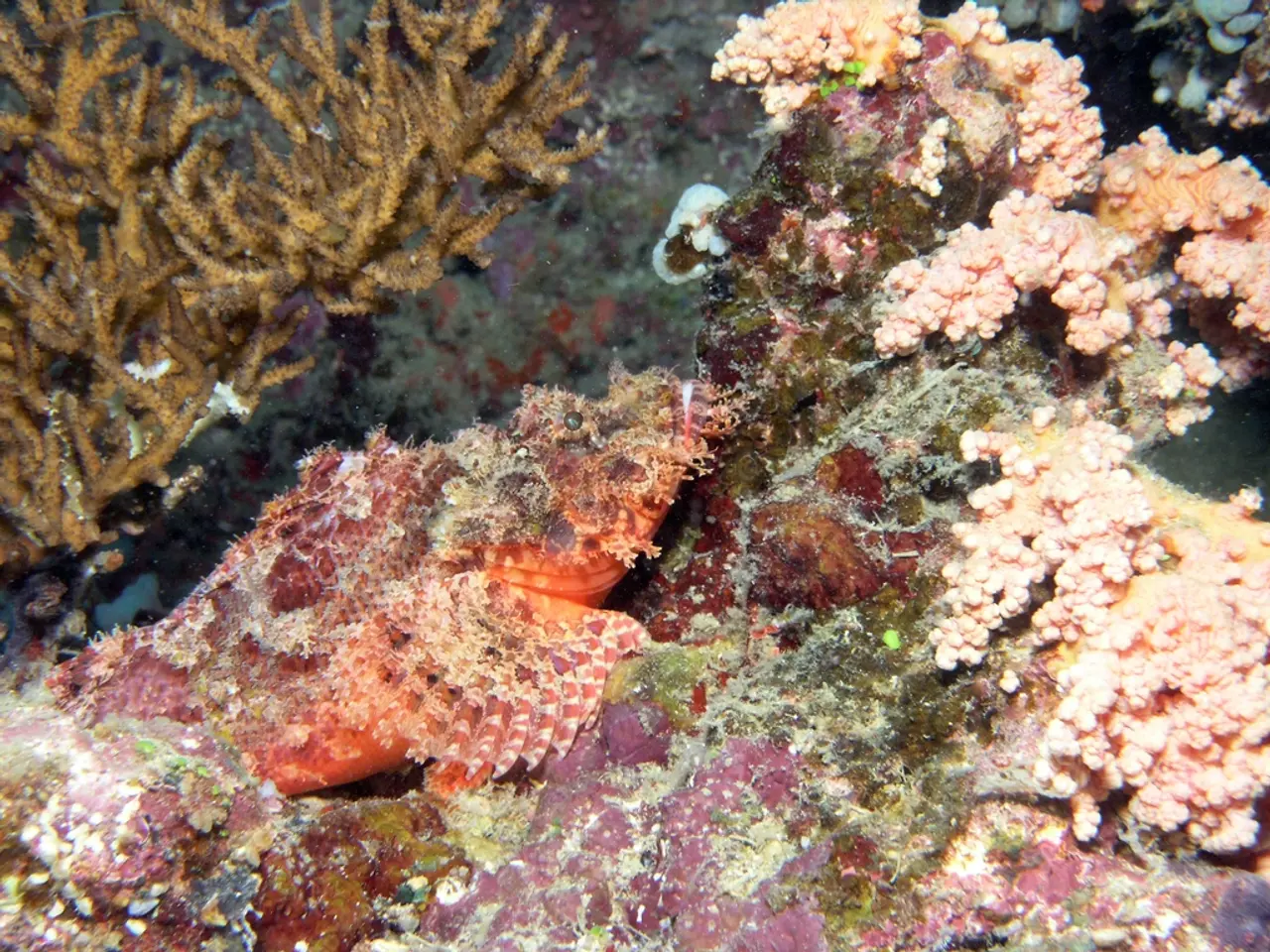Beneath the Depths of the Ocean Floor, Researchers Discover Dazzling 'Dark Oxygen'
In the vast expanse of the Pacific Ocean, a 4.5 million-kilometer-square area known as the Clarion-Clipperton Zone (CCZ) is home to an intriguing find. This region, located between Hawaii and the western coast of Mexico, is renowned for its immense collection of potato-sized rocks known as polymetallic nodules.
These nodules, which reside 4,000 meters below the surface where sunlight can't reach, have a surprising ability - they produce oxygen. This discovery, reported by researchers, could potentially rewrite the script on the origin of life on Earth.
Polymetallic nodules contain rich deposits of nickel, manganese, copper, zinc, and cobalt, making them a valuable resource. However, their oxygen-producing capacity adds a new dimension to the debate over what to do with these nodules. Some see them as the answer to energy problems, while others advocate for a moratorium on mining to protect these nodules and their newfound oxygen-producing properties.
Andrew Sweetman, a deep-sea ecologist, recreated the conditions of the CCZ in a laboratory to study the oxygen production by polymetallic nodules. His findings showed that even when microorganisms were killed off with mercury chloride, the oxygen levels continued rising.
The future of these nodules is at a critical point. The International Seabed Authority (ISA), an organisation that conducts research on polymetallic nodules in the CCZ and negotiates potential deep-sea mining regulations, is still in discussions with key players on the matter.
Lisa Levin, a researcher from Scripps Institution of Oceanography, emphasizes the importance of a moratorium on deep-sea mining to protect these nodules and their newfound oxygen-producing properties. She warns that disrupting ocean ecosystems could lead to consequences beyond our imagination.
Darren Orf, a writer and editor, specializes in sci-fi and understanding our world. His previous work can be found at Gizmodo and Paste. He resides in Portland with a cat, and continues to contribute to the ongoing discourse surrounding the polymetallic nodules and their potential impact on our world.
As the world grapples with conservation versus exploitation, the polymetallic nodules in the CCZ stand as a testament to the wonders hidden in our oceans, and a reminder of the delicate balance we must maintain to preserve them.
Read also:
- "Eco-Scam": Unveiling the Truth about Electric Vehicles
- European transportation's sustainability and competitiveness rely on a "green industrial agreement" that serves the interests of both corporations and residents, as discussed in an Editorial from August 2024.
- Indian Oil Corporation's Panipat Refinery secures India's inaugural ISCC CORSIA accreditation for Sustainable Aviation Fuel production
- Porsche Macan Accelerates into Second Generation of Electric Power







